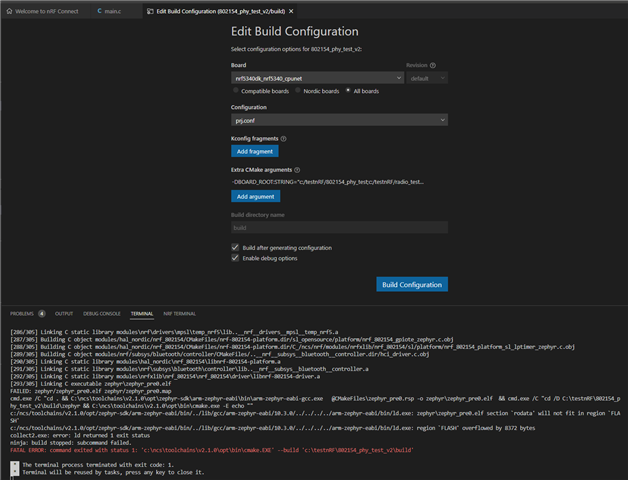Hi,
I am trying to create an ad-hoc network with several nrf5340 boards using 802154 radio, e.g. whenever each node transmits, others can receive the transmitted packets. First, I started with an example from your company such as the multiprotocol_rpmsg project to understand how it works. But the code size is very large after compiling without debugging features as follows:
Memory region Used Size Region Size %age Used
FLASH: 243768 B 256 KB 92.99%
SRAM: 64444 B 64 KB 98.33%
SRAM1: 0 GB 64 KB 0.00%
IDT_LIST: 0 GB 2 KB 0.00%
I did not know to continue without a debugging feature. Or I doubt that if we add several code lines, FLASH is overloaded. Would you please suggest which sample I can start with to check 802.15.4 radio for nrf5340 using Visual Studio Code?
I also try to use other examples such as 802154_phy_test, radio_test. But there are various errors when I compile the new created project. I try to search for the reason on the forum but a few mentioned that it is not compatible board for nrf5340. I do not know why it does not work with nrf5340.
I am happy with a simple example without threads first. If it is possible, would you please suggest to me how to check 802.15.4 radio of nrf5340 communicating with other nrf5340 boards using sequential code and ISR first? Which examples for Visual Studio Code I should start?
Thank you very much.
Lan



